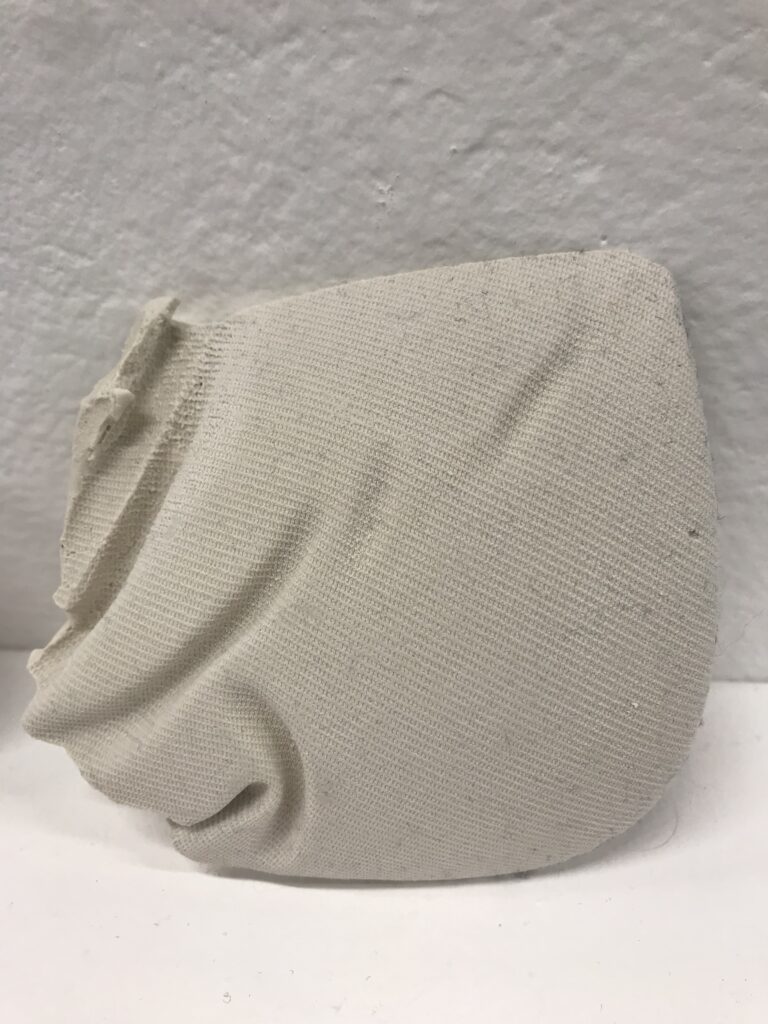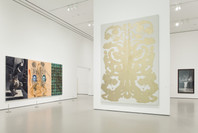Placing objects in pockets.
For this I glued earbuds and a phone to the inside of the pockets so they can come out of the dried plaster easily. Once the plaster was dry I did need to do hack away a little bit to get the earbuds out but overall I think it looked pretty cool.




Outcomes:





My lovely friend being amazing
For this I wanted to extend the pocket idea further by having someone IN the pants whilst filling it with plaster. This meant the plaster was shaped by her body as well as the shape of the pocket.
It’s somewhat more revealing as it casts the contents of the pockets are well as the imprint of the body. For this one I left a hair tie in the pocket and attempted to remove it once it had hardened but I actually liked how it looked. And the action of me removing it made it feel as though I was digging up a fossil or something. But by leaving it in there it is physically bringing the contents out of the pocket. It visually invites the viewer to look more closely to uncover what the object is. By trapping it in the plaster it seems harsher, not only am I prying but also stealing. I am taking it with me rather than just noticing it is there.







Seated:


Outcomes:


These came out cool as well, obviously thinner and smaller due to there not being as much room in the pockets when she was sitting. But it adds interest when looking at the moulds all together. It shows how a pocket operates when in tandem with the body. I want to try and push this further by pouring the plaster and then continually moving until it dries.
Jacket:
Until I opened the zippers I had no idea this one had fake pockets. But I thought I’d use it anyway as it adds a bit of humour to the series. I’m exploring pockets, but also ‘not’ pockets. The idea that I’m playing with of exposing a private space, actually still works with this piece as I’m exposing the fact that the pockets that are made to look real are actually fake. This is vulnerable but in a different way than the other pockets casts.







I really like how these turned out. They remind me of a fossil and even the one that cracked turned out really interesting. The texture of the zip came out really nicely. The remains of the fabric stuck onto the plaster very much connects the sculpture to the clothing item, even when they are not photographed together. It acts as an identifier, which is an interesting idea.
I did a few more casts of pockets just to get more variation:
This one I left the earbuds in the pocket without glue or anything in a more natural position. This meant that when it was dry it was pretty impossible to remove so it didn’t leave an imprint as such but hinted to the object in a more obvious way, with a bit of the wire sticking out. Again, like the hair tie piece, it is like stealing from the pocket and the wearer.



Ideas going forward
Pouring plaster in and going about activities
Putting plaster mould BACK into pockets and wearing them

















































